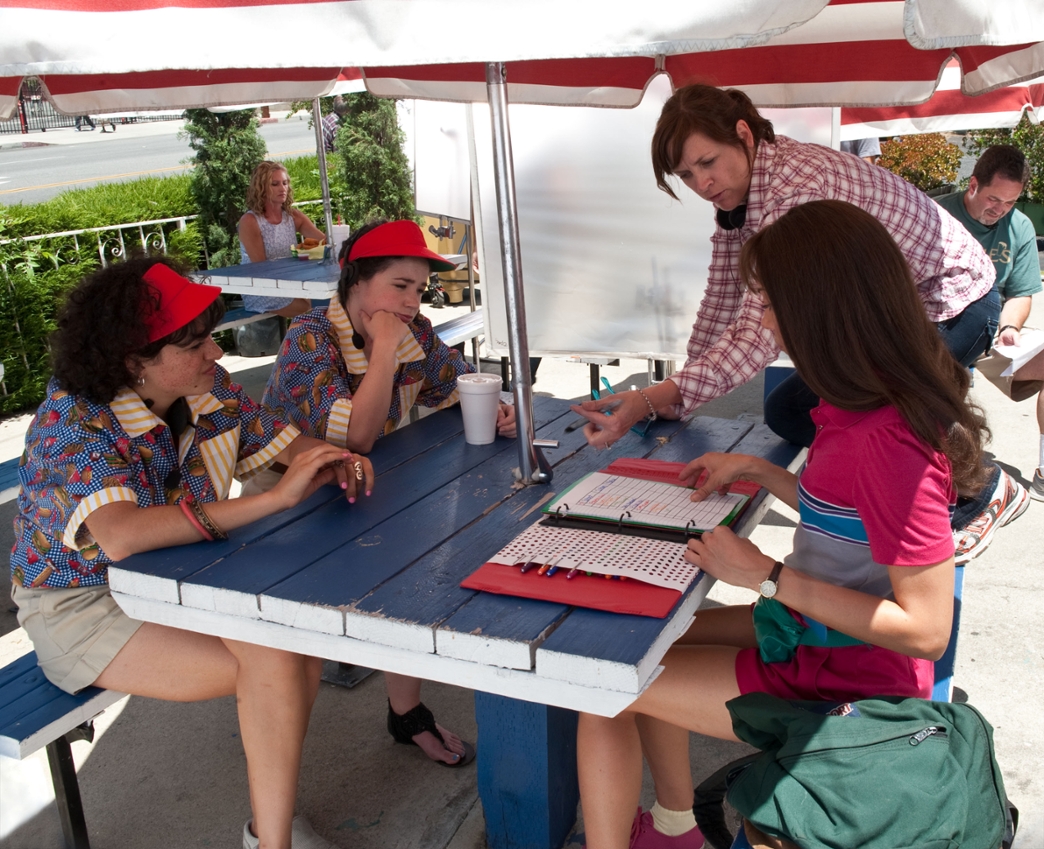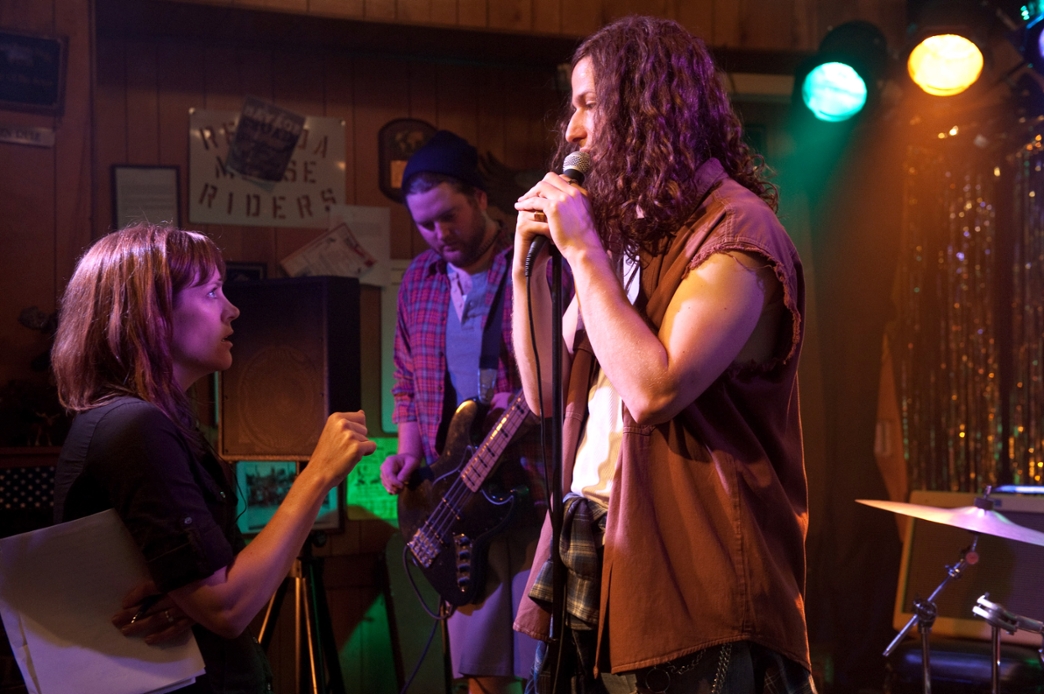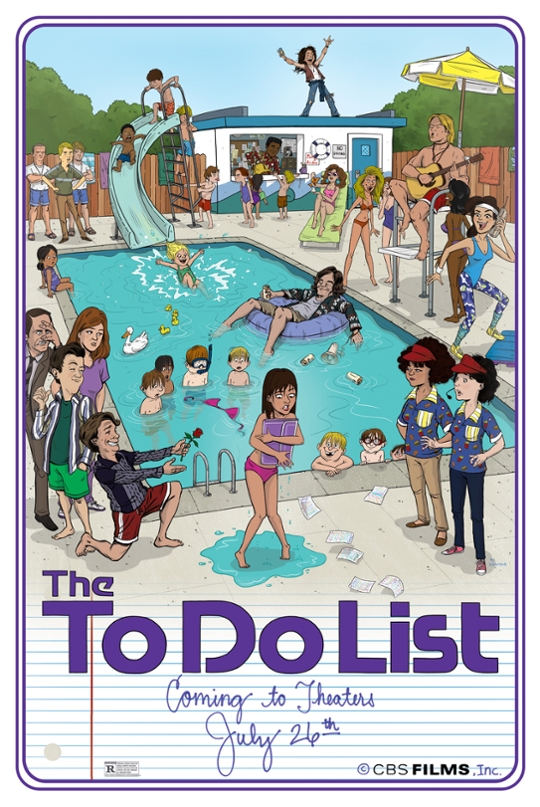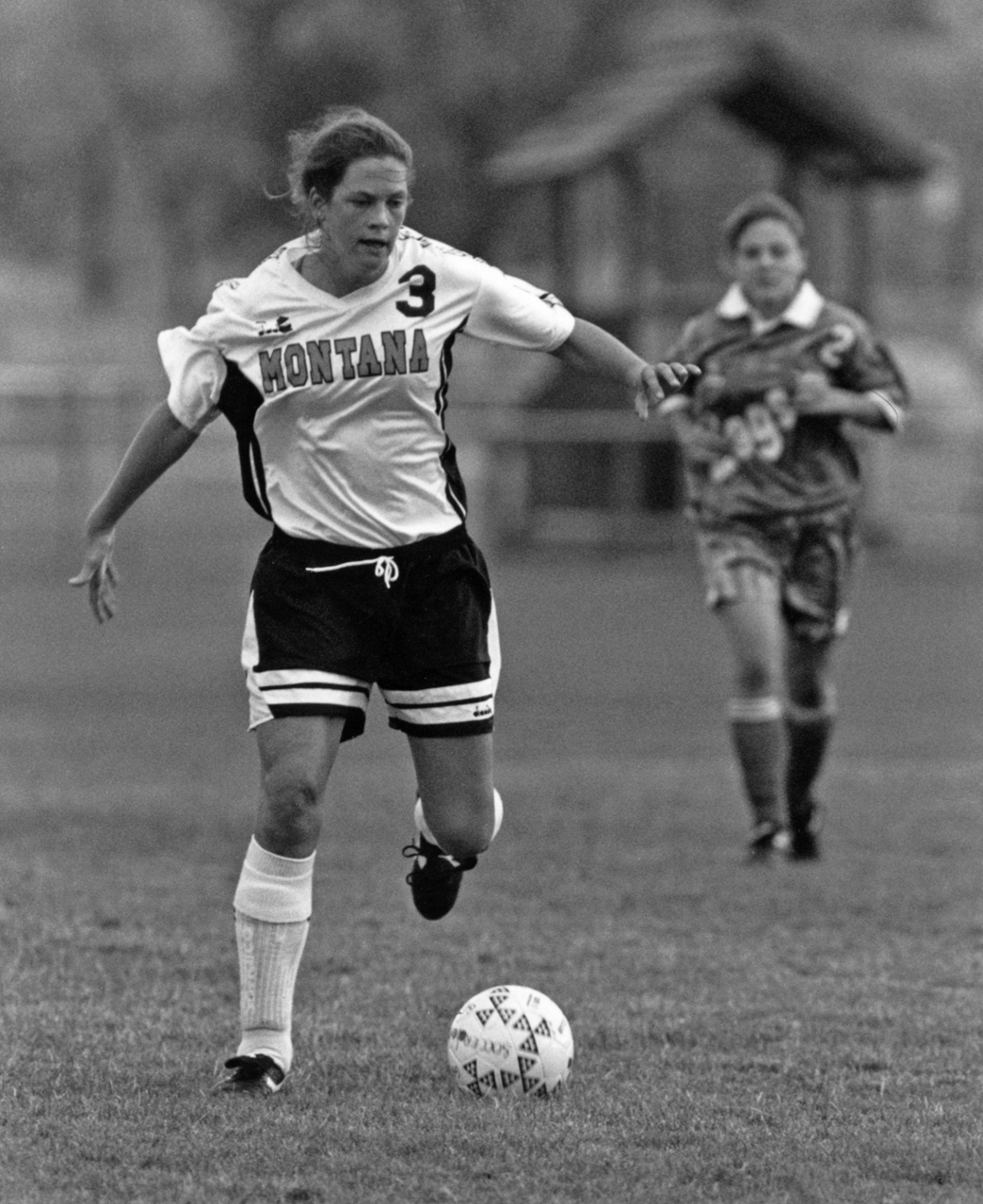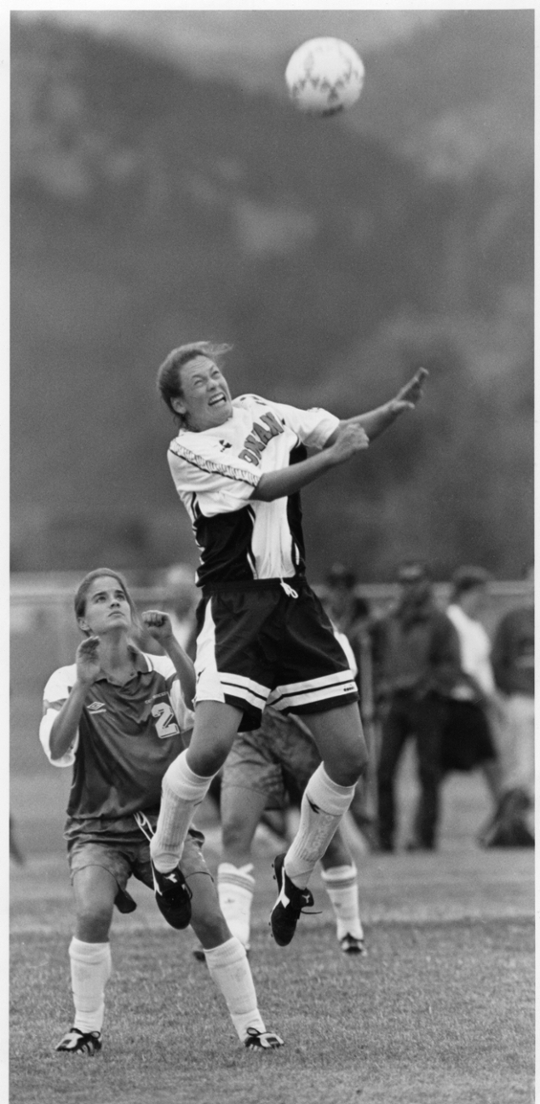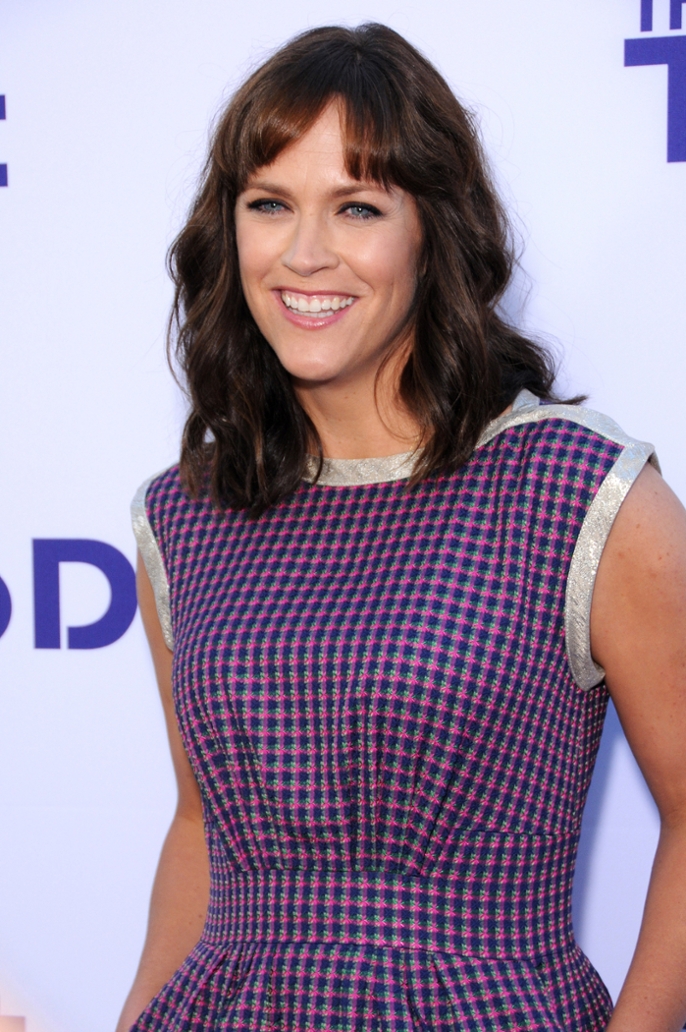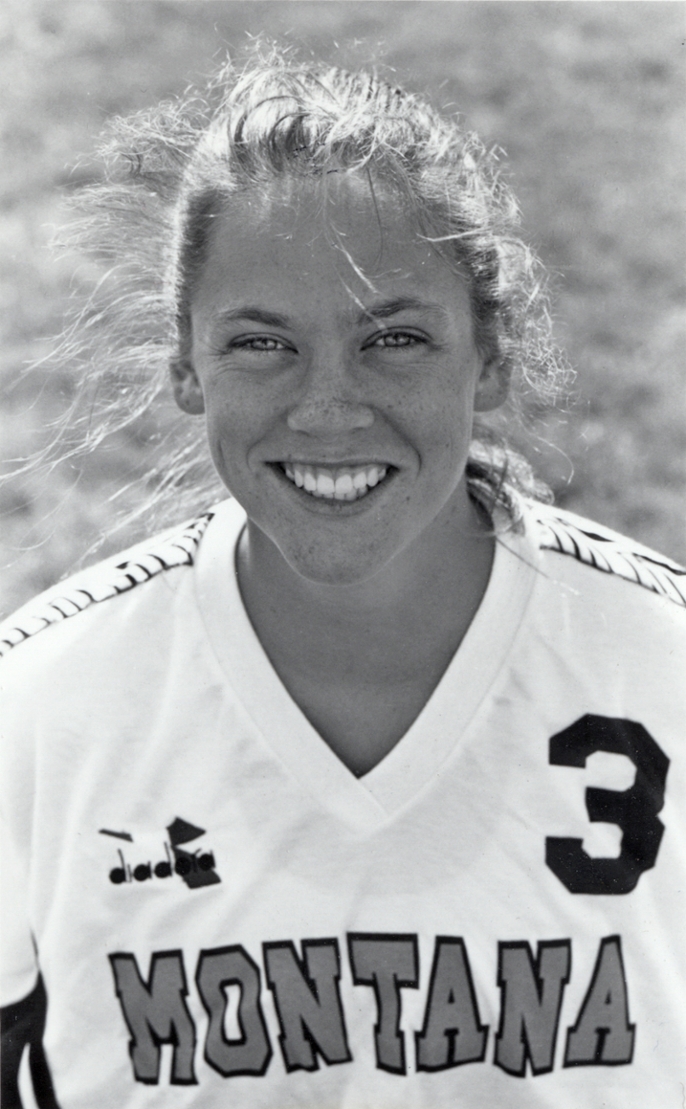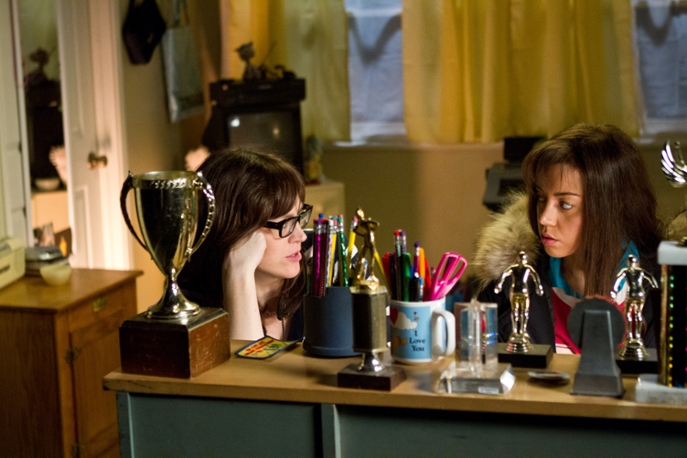Q & A with Maggie Carey
Why did you come to the University of Montana, and what was your impression of Missoula?
I was recruited by UM. They had just started their Division I soccer program, and I really wanted to play college soccer. Once I visited the campus I fell in love. Missoula is such a cool, fun, liberal town. I love skiing, too. That was definitely a draw. And the M, which, sadly, with my soccer team, we ended up running quite a bit.
What was it like at the beginning of the women’s soccer program, back when you had to practice at Fort Missoula?
It was intimidating. There was not a soccer community in Montana. We were really the forgotten child of the athletic department. But we had the most loyal, awesome, group of guys who were diehard soccer fans. They would come and dress up and beat drums and they were also always incredibly smart. They wouldn’t just harass the other team; they would have these really witty comments. I wish I could remember some of their names.
What did you major in?
I’d look at the course book every semester and see what looked interesting. I usually took women’s issues classes. I was late to declare a major. I had the most credits in English, so I ended up graduating with a degree in English literature. My mother said, “You need to pick a major. You need to graduate.”
You also had an interest in film, right?
I took broadcast journalism. I just wanted to work a camera. I had no interest in working in news. I worked at the PBS station my third year there. When you grow up in Idaho, there’s not a lot of access to filmmakers or the industry. So, I started working at the PBS station in Montana. I used what they had, and I ended up directing a documentary about women homesteaders in Montana.
Was it odd to go from documentary to comedy?
I think I’ve always had my sense of humor, so that wasn’'t much of a jump. I made the highlight videos for my soccer team, so that was part of this culmination. I ended up, my last year there, riding the bench. So I made the highlight video instead of playing.
Tell me about the first comedy troupe you joined, Bob’s Family Improv Group, in Missoula.
I didn’t tell anyone I auditioned. I’d always been a fan of Second City in Chicago, but we didn’t have access to (improv) in Idaho. All of the sudden, I found an improv group in Montana.
What was it like?
I was with Bob’s for a year. I feel like we did shows twice a month at the Old Post, and we sort of toured around. We got paid to perform in bars, and that could cover my rent in Missoula, which was probably like $200. We went to a lot of tiny towns in Montana and Idaho. People were a little bit starved for any kind of alternative entertainment. It was easy to book shows. It wasn’t easy to get people out.
Do you remember any skits that you did?
No, and I don’t think they were worth remembering.
But you were fascinated with improv?
I always had been. In the 1990s a book about Second City came out and everybody got it for Christmas that year. That book just kind of stayed with me. It wasn’t until I moved to New York City, when I started at the Upright Citizens Brigade, that I really understood improv and what it could be. There’s a real philosophy behind it. I had to take classes, study it, do longform improv, which had really helped my writing. It was good to be in a college improv group, and even better to move to a city where there’s a real passion for improv.
What did you want to be when you were growing up?
Probably I wanted to be Hillary Clinton, whom I still admire. I definitely wanted to be a director—I just didn’t know how to get there. And I always had an interest in writing. I loved documentary and storytelling.
Tell me about your decision to go to film school in Austin.
I stayed in Missoula for a year while I applied to grad school. It was either go to film school or move to L.A. Clerks had just come out, and Kevin Smith talked about this film school he went to in Vancouver. This concept of film school was new to me. It seemed to make a lot of sense. I could go to school and find my voice. I really would have had no contacts in L.A. I don’t know what I would have done if I would have moved out there. So school made perfect sense.
I understand you’re still friends with a lot of your old teammates.
I’m really close with the soccer team. We have these reunions every year.
Some of the funniest parts of The To Do List were the little details, which I read were taken directly from your old high school diaries. What details from the first UM Lady Griz soccer teams can viewers expect in your new film?
We’ll still have bad hairstyles. And have no concept of fashion when we go out as a team.
Will it be filmed in Missoula?
It’s set in Montana. The To Do List was set in Idaho, but it was filmed in LA. So we’ll see.

